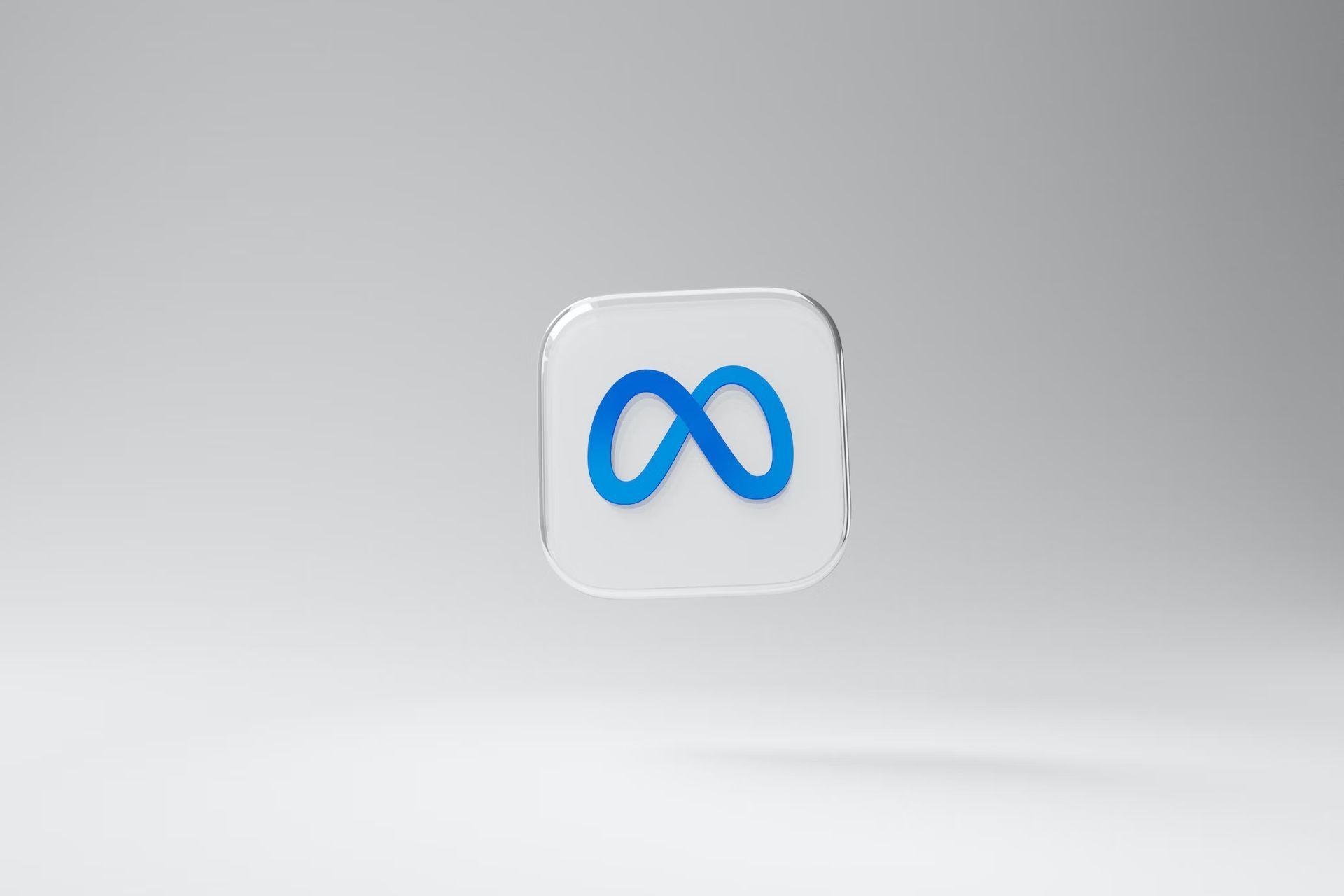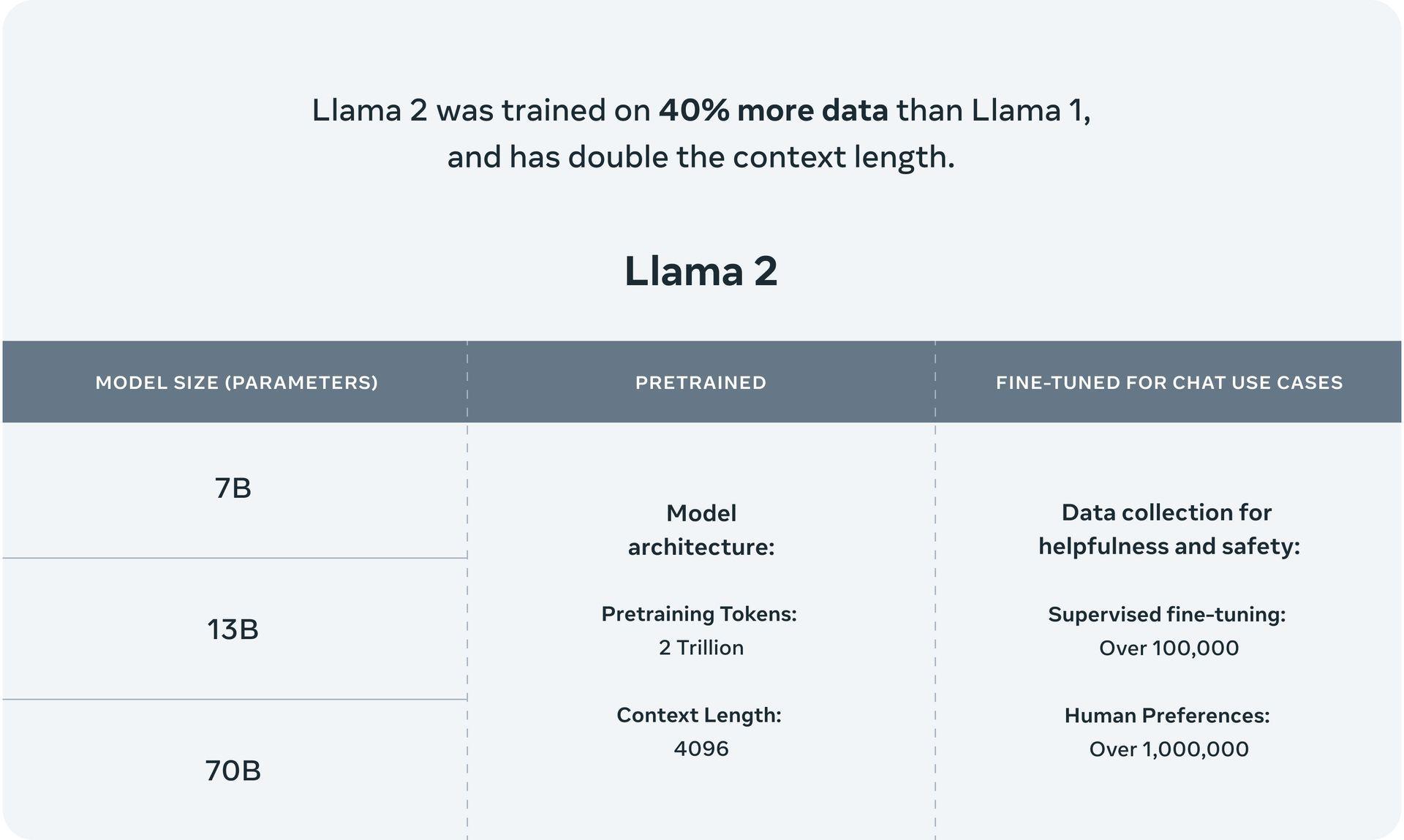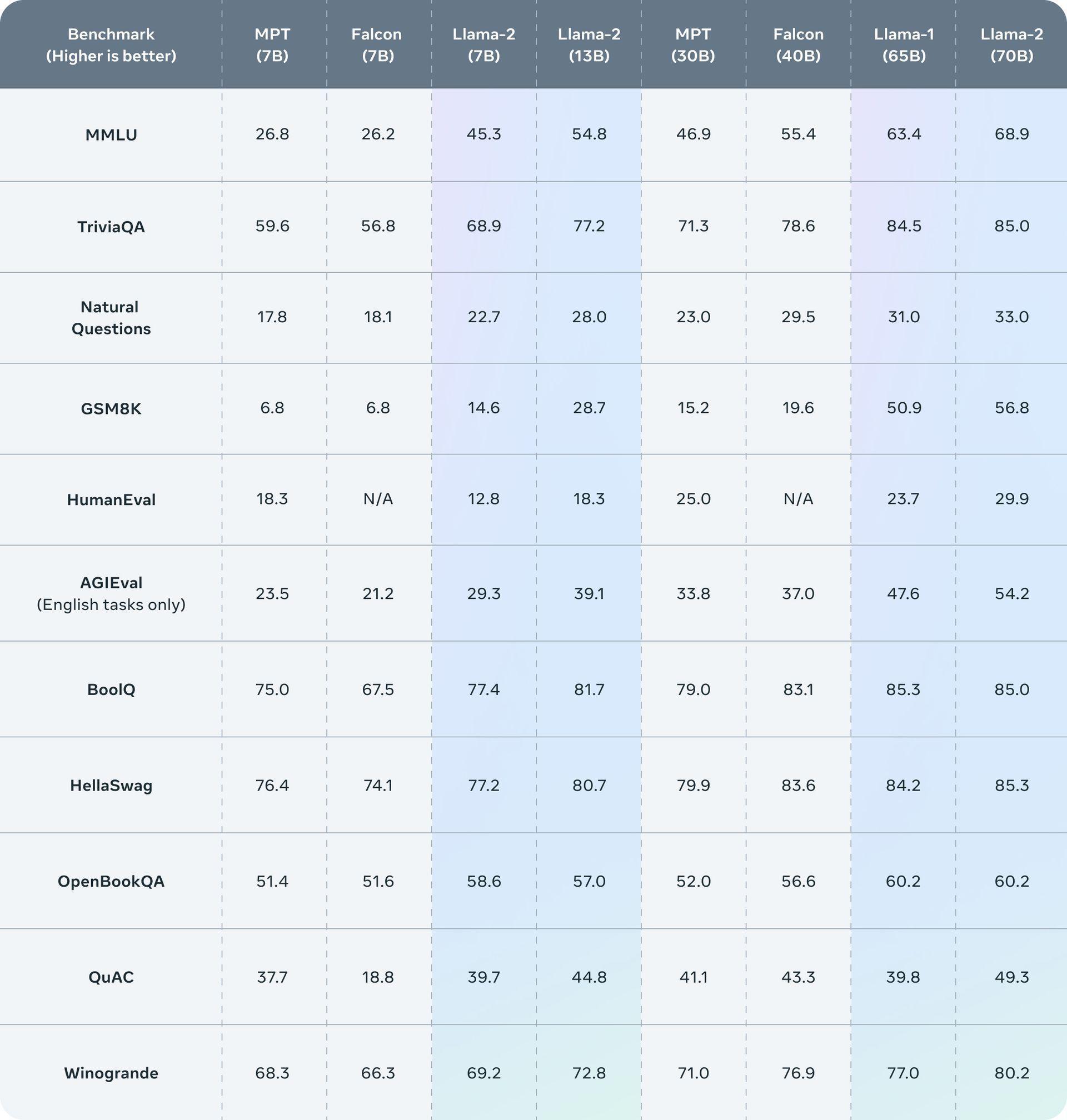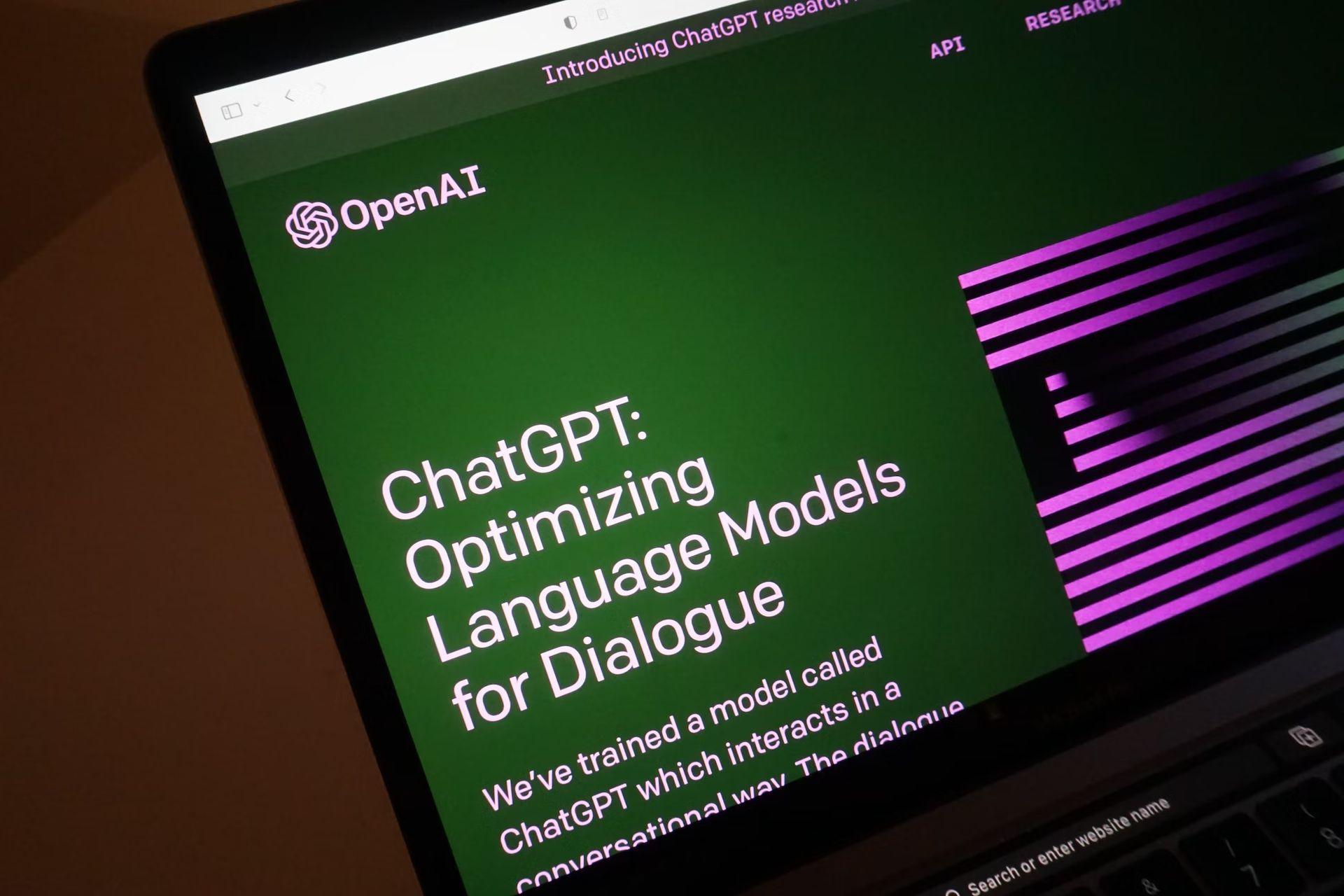Meta AI pulled the curtain back on Llama 2, the latest addition to their innovative family of AI models. This high-tech offspring isn’t just meant to sit on a shelf; it’s engineered to power a variety of cutting-edge applications including, but not limited to, OpenAI’s ChatGPT and Bing Chat. We’ll explore how to use Llama 2 too, so stay tuned.
Meta AI unveils Llama 2
Handpicked from a buffet of publicly accessible data, the training grounds of Llama 2 have been as diverse as they are extensive. Meta confidently states that this second iteration of Llama models, thanks to its diverse education, presents a substantial performance upgrade over its predecessors. In the fluid and fast-paced world of modern chatbots, this improvement is more than just a step forward—it’s a giant leap towards the future of AI interaction.
“Today, at Microsoft Inspire, Meta and Microsoft announced support for the Llama 2 family of large language models (LLMs) on Azure and Windows. Llama 2 is designed to enable developers and organizations to build generative AI-powered tools and experiences. Meta and Microsoft share a commitment to democratizing AI and its benefits and we are excited that Meta is taking an open approach with Llama 2.”

Code Llama wants to be your ultimate AI co-creator for code
What is Llama 2?
Emerging from the shadows of its predecessor, Llama, Meta AI’s Llama 2 takes a significant stride towards setting a new benchmark in the chatbot landscape. Its predecessor, Llama, stirred waves by generating text and code in response to prompts, much like its chatbot counterparts. However, Llama’s availability was strictly on-request to guard against potential misuse – a move that didn’t entirely prevent it from leaking online and circulating among AI enthusiasts.

Stepping away from the restricted availability approach of its precursor, Llama 2 will embrace a broader stage. Ready for fine-tuning on platforms like AWS, Azure, and Hugging Face’s AI model hosting platform, it’s set to be a game-changer. With Meta’s assurance of a smoother run, Llama 2 is prepared to dominate not just Windows, thanks to Meta’s collaboration with Microsoft, but also smartphones and PCs equipped with Qualcomm’s Snapdragon system-on-chip.
Check out the 10 best AI crypto projects that can make you rich
Safety first
As we celebrate the dawn of Llama 2, it’s important to highlight the cornerstone of this model: safety. Meta’s commitment to delivering accurate results and curtailing misuse has been a guiding principle in developing Llama 2. Acknowledging issues with early LLMs such as GPT, which have been plagued by ‘hallucinations’, misinformation, and harmful perspectives, Meta has gone to great lengths to avoid these pitfalls.
With an intensified training regimen focusing on ‘truthfulness’, ‘toxicity’, and ‘bias’, Meta has fortified Llama 2’s defenses against these issues. As a result, Llama 2 Chat is lauded as a significant improvement over its pretrained version in terms of both truthfulness and toxicity.
“The percentage of toxic generations shrinks to effectively 0% for Llama 2-Chat of all sizes: this is the lowest toxicity level among all compared models. In general, when compared to Falcon and MPT, the fine-tuned Llama 2-Chat shows the best performance in terms of toxicity and truthfulness.”
-Meta
This breakthrough potentially transforms Llama 2 into a reliable generative AI tool for a wider array of tasks. Despite GPT’s impressive human-like text generation capabilities, the need to meticulously check and cross-check its outputs highlights a significant challenge. With Llama 2, Meta aims to put these concerns to rest, crafting an AI that can be trusted without a constant need for surveillance.
Llama vs Llama 2
Diving into the nuances between Llama and its successor, Llama 2, Meta’s extensive whitepaper illuminates an array of distinguishing features.
The star of the show, Llama 2, dons two distinct roles – Llama 2 and Llama 2-Chat. The latter is particularly optimized for engaging in two-way conversations. They are further classified into distinct versions characterized by their level of sophistication, ranging from 7 billion parameter to a whopping 70 billion parameter model. If you’re wondering about “parameters,” think of them as the facets of a model that are honed through training data, defining the prowess of the model in a specific task like generating text.

When it comes to the training of Llama 2, the model was educated on two million tokens – elements of raw text such as “fan,” “tas,” and “tic” in the word “fantastic.” This represents a significant leap from Llama’s training, which was based on 1.4 trillion tokens. As a general rule of thumb in the generative AI sphere, the more tokens, the merrier. For comparison, Google’s premium large language model (LLM), PaLM 2, was reportedly trained on 3.6 million tokens, while speculations suggest that GPT-4 was brought up on trillions of tokens.
Maintaining an air of mystery, Meta refrains from disclosing the specific origins of the training data in the whitepaper. What they do share is that the data is predominantly from the web, primarily in English, and does not originate from Meta’s own products or services. The focus, they highlight, is on text that leans towards a “factual” nature. Now let’s find out how to use Llama 2.
The Sam Altman crypto project “Worldcoin” is out
How to use Llama 2?
If you’re eager to experience Meta AI’s Llama 2 for yourself, there’s good news. A demo version is readily available on Huggingface. Just follow these simple steps:
- Go to this link.
- Once you’re on the webpage, keep scrolling down until you encounter a section labeled “Demo.”
- You’ll find a chatbox there. Go ahead and type a message into it.
- Press enter to send your message.
Llama vs ChatGPT
When it comes to LLMs capable of generating strikingly human-like text, both LLaMA and ChatGPT have emerged as game-changers. These models’ ability to weave coherent and contextually appropriate language makes them indispensable across diverse applications. Despite their shared strengths, certain key distinctions set them apart.
Presented by Meta, LlaMA (Large Language Model Meta AI) is a fresh face on the LLM stage. Its design emphasizes efficiency and minimal resource demand, making it more accessible to a broader audience. LlaMA’s standout feature is its availability under a non-commercial license, allowing researchers and organizations to easily incorporate it into their work.
Uncovering the power of top-notch LLMs
Contrastingly, OpenAI’s ChatGPT holds a reputation as one of the most advanced generative AI systems in today’s world. It’s celebrated for its uncanny ability to generate natural language text that often mirrors human-authored content.
The foundations of both LlaMA and ChatGPT lie in transformers – a type of artificial neural network leveraged in machine learning to analyze vast data volumes and generate novel content or predictions based on the gleaned insights.

One crucial factor that separates LlaMA from ChatGPT is their size. LlaMA, with its emphasis on efficiency and low resource consumption, is more compact than many other LLMs. While it has fewer parameters, it counterbalances this by optimizing its efficiency.
ChatGPT is a giant in the LLM world, boasting over 175 billion parameters. Its substantial size necessitates a hefty computational power but also enables it to generate intricate and sophisticated language.
The learning approach for both LlaMA and ChatGPT is unsupervised, meaning they don’t rely on human-labeled data to learn. They train on extensive text data sourced from the internet or other resources, creating new text based on recognized patterns.
A key difference between the two lies in the nature of their training data. LlaMA hones its skills on a wide spectrum of texts, from scientific articles to news stories. In contrast, ChatGPT’s training ground primarily comprises internet text like web pages and social media content. This suggests LlaMA might be a better fit for generating specialized or technical language, whereas ChatGPT may shine in creating informal or conversational language.
Both LlaMA and ChatGPT represent the cutting edge of language models, having the potential to revolutionize natural language processing applications. Despite their differences, they share a core capability: generating impressively human-like language, promising exciting applications in chatbots, content generation, and beyond.
Llama 2 vs GPT-4
It’s important to note that comparing these two models in their entirety might not be entirely fair given that we only have access to the demo version of Llama 2. However, using the same prompt for both GPT-4 and Llama 2 will give us some interesting insights into their respective capabilities and stylistic tendencies.

The prompt: “Write me a 100-word long passage about the importance of chatbots.”
- GPT-4:
It appears that GPT-4’s response, while shorter and succinct at 93 words, successfully provides accurate information.
- Llama 2 demo:
On the other hand, Llama 2 leans towards a more comprehensive response with 122 words. Even though it’s slightly more verbose considering the given prompt, it offers commendably detailed information.
AI 101
You can still get on the AI train! We have created a detailed AI glossary for the most commonly used artificial intelligence terms and explain the basics of artificial intelligence as well as the risks and benefits of AI. Feel free the use them. Learning how to use AI is a game changer! AI models will change the world.
In the next part, you can find the best AI tools to use to create AI-generated content and more.
AI tools we have reviewed
Almost every day, a new tool, model, or feature pops up and changes our lives, and we have already reviewed some of the best ones:
- Text-to-text AI tools
Do you want to learn how to use ChatGPT effectively? We have some tips and tricks for you without switching to ChatGPT Plus, like how to upload PDF to ChatGPT! However, When you want to use the AI tool, you can get errors like “ChatGPT is at capacity right now” and “too many requests in 1-hour try again later”. Yes, they are really annoying errors, but don’t worry; we know how to fix them. Is ChatGPT plagiarism free? It is a hard question to find a single answer.
- Text-to-image AI tools
- MyHeritage AI Time Machine
- Reface app
- Dawn AI
- Lensa AI
- Meitu AI Art
- Stable Diffusion
- DALL-E 2
- Google Muse AI
- Artbreeder AI
- Midjourney
- How to fix Midjourney invalid link
- Midjourney alternatives
- Midjourney AI tips
- Midjourney V5.2
- Midjourney video generation guide
- Where to look for the best Midjourney images?
- DreamBooth AI
- Wombo Dream
- NightCafe AI
- QQ Different Dimension Me
- Random face generators
- Visual ChatGPT
- Adobe Firefly AI
- Leonardo AI
- Hotpot AI
- DragGAN AI photo editor
- Freepik AI
- 3DFY.ai
- Photoleap
- Artguru
- Luma AI
- BlueWillow AI
- Scribble Diffusion
- Clipdrop AI
- Stable Doodle
While there are still some debates about artificial intelligence-generated images, people are still looking for the best AI art generators. Will AI replace designers? Keep reading and find out.
- AI video tools
- AI presentation tools
- AI search engines
- AI interior design tools
- Other AI tools
Do you want to explore more tools? Check out the bests of:






